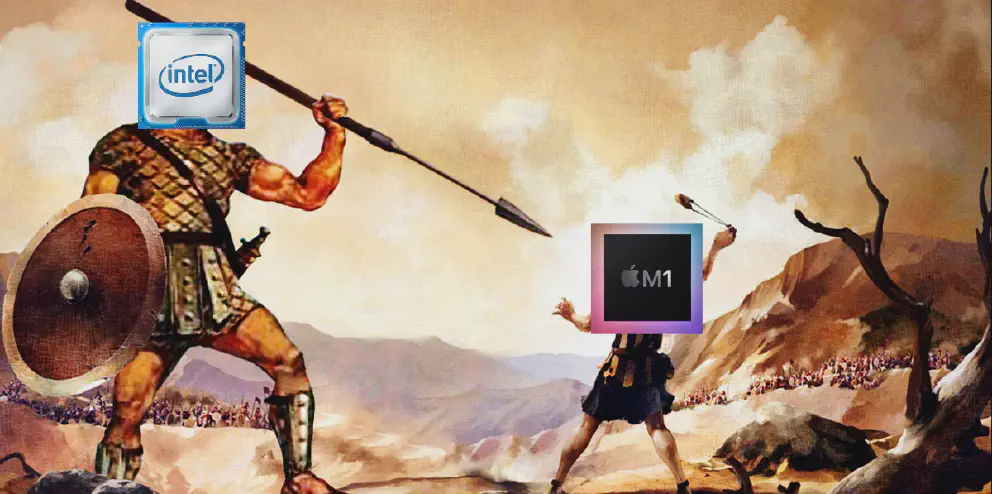The M1 chip is a game changer for the desktop / server segment for the PC industry as a whole, but it is just the last bastion for Intel and x86 in a world where RISC / ARM reign supreme.
The war on x86
The secret ‘war’ on x86 platform has been going on for years. The war has change considerably since 2007 when a guy named Steve Jobs shows this small communication device called the iPhone.
Since than, development on the RISC architecture and ARM in particular had gone through a very intense growth process and now it actually begins to eclipsed RISC machine in power consumption and single thread performance
Phone sales and usage is getting higher and higher. Almost all phones are using some sort of ARM processor. And Tables is beginning to rival laptops in raw performance.
How M1 beats Intel
Social media is awash with videos and benchmarks about how a fanless laptop can handily render 4k 60fps 422 video without issues. How about a $900 Mac Mini can keep up with a $15,000 Mac Pro?
The key features of the M1 is optimization and hardware acceleration on specific tasks. Apple makes the M1 chip and optimized the chip for the macOS environment to ensure that it does best in its environment. Its unified memory saves time by ensuring that instead of copying data from one memory place to another, you just process all at the same place.
The M1 also have hardware acceleration for tasks that Apple thinks most people will use, such as video/audio encoding, hard disk encryption and neural processing.
Changing the game
With such dramatic improvements, Apple M1 will undoubtedly changed Intel and AMD’s game. Just seeing how a fanless ultrabook can render 4k video without missing a beat, they would have a long hard look at their current roadmap and see if it is still relevant anymore.
Just in the near term, you can expect on how will CPUs of the future will be much different than how it is today. First off, GPU will take more importance than ever before. We will see more beefier GPUs on Intel and AMD. On chip GPU is used to be an afterthought for those players, now they will be more focused to deliver the performance that they need.
Another area that will change is the hardware accelerators that will be built into the chip. One reason why M1 is so fast because Apple correctly identify the task that need to be accelerated and made accelerators for that task. Intel has done this before with VMX technology that helps Virtual Machine performance.
Apple has long tightly control what goes into the boards of it’s computers and phones. Apple also is not afraid to cut off things that it does not need anymore. For example, M1 doesn’t have SATA controllers build in to control storage space because it uses it’s own custom controllers. Because of this, every part of the M1 is use particularly for that board and no wasted space on the M1 because to support legacy protocols. Intel might drop support for older binaries, for example not running 32-bit apps on Intel chips anymore.
Conclusion
M1 will certainly changed the game for x86 designers like Intel and AMD. After decades of leap frogging each other, there will be a new player in town to shake things up. It will be an exciting next 5 years when Apple started to move their M-series up to iMac, Macbook Pro 16″ and eventually the Mac Pro.
Plug
Get your Apple Computers with M1 chips at my Amazon Affiliate links.
